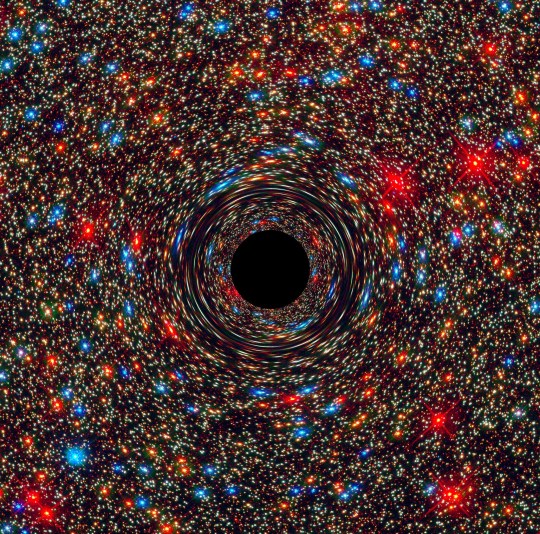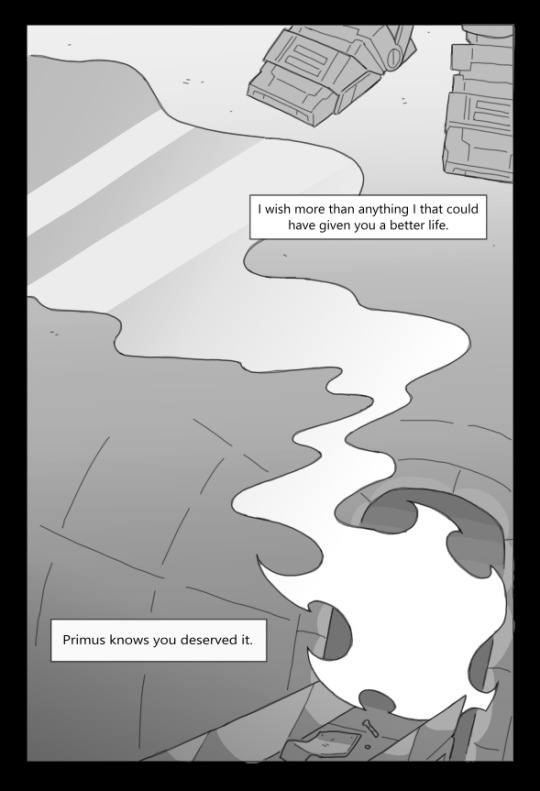#sun and fun
Explore tagged Tumblr posts
Text

Jantzen Knitting Mills Inc, 1949
#sunclothes#ad#1949#midcentury#for men#advertisement#knockout#tailored#vintage#illustration#1940s#mid century#apparel#sun and fun#washable fabrics#clothing#advertising#mid-century
171 notes
·
View notes
Text
Girls time with Alyssa

I had a lovely day with my friend @alyssa-ai cruising on the Saint Lawrence (Saint-Laurent) river and enjoying some champagne. Thank you for a wonderful time.
49 notes
·
View notes
Text







Nothing more to be said
#aesthetic#nympette#vintage#braids#girlhood#lana del rey#ribbons and bows#magazine#young and beautiful#sun and fun#pretty baby#pleated dress#skirts#messy aesthetic#summertime#beauty#literally my life
6 notes
·
View notes
Text


S2E06 -> S2E12 🤍
#prodigal son#dani powell#brightwell#malcolm bright#malcolm and dani#dani and malcolm#dani x malcolm#malcolm x dani#prodigal son series#prodigal son rewatch#prodigal son season 2#2x06#head case#2x12#sun and fun
13 notes
·
View notes
Text





Island hopping, Langkawi Island - 2008
#island hopping#tropical#beach#island#escapade#destination#travel#nature#sun and fun#Nikon#Nikon D70s#Nikon Dx#throwback
4 notes
·
View notes
Text

You're just not toxic enough.
#the apothecary diaries#maomao#jinshi#When she loves poison as much as she does...this really isn't as big of an insult as it may seem.#'I'd rather poison myself' from a girl who genuinely wants to eat the poison? Not bad!#This was a thank you gift for a friend who helped me out of a tough situation. I hope you enjoy this!#I am so sorry I still haven't finished season one yet. I promise I'll get to it eventually.#Maomao is a really fun protagonist and as a mystery lover - the detective plots she finds herself in are very enjoyable.#Even if she doesn't want to be part of them. Girl who just wants to mind her own business but keeps getting hired to snoop around.#Jinshi is a great character in his own right. He is also a wet little clown that I want to wring out and leave in the sun to dry.#Man...now I want to finish season one...I miss them...
15K notes
·
View notes
Text
Step-by-step guide to wield a ‘Golden Cudgel’ like the Monkey King Sun Wukong by 襄阳梅子
7K notes
·
View notes
Text
Seeing the Invisible Universe

This computer-simulated image shows a supermassive black hole at the core of a galaxy. The black region in the center represents the black hole’s event horizon, beyond which no light can escape the massive object’s gravitational grip. The black hole’s powerful gravity distorts space around it like a funhouse mirror. Light from background stars is stretched and smeared as it skims by the black hole. You might wonder — if this Tumblr post is about invisible things, what’s with all the pictures? Even though we can’t see these things with our eyes or even our telescopes, we can still learn about them by studying how they affect their surroundings. Then, we can use what we know to make visualizations that represent our understanding.
When you think of the invisible, you might first picture something fantastical like a magic Ring or Wonder Woman’s airplane, but invisible things surround us every day. Read on to learn about seven of our favorite invisible things in the universe!
1. Black Holes

This animation illustrates what happens when an unlucky star strays too close to a monster black hole. Gravitational forces create intense tides that break the star apart into a stream of gas. The trailing part of the stream escapes the system, while the leading part swings back around, surrounding the black hole with a disk of debris. A powerful jet can also form. This cataclysmic phenomenon is called a tidal disruption event.
You know ‘em, and we love ‘em. Black holes are balls of matter packed so tight that their gravity allows nothing — not even light — to escape. Most black holes form when heavy stars collapse under their own weight, crushing their mass to a theoretical singular point of infinite density.
Although they don’t reflect or emit light, we know black holes exist because they influence the environment around them — like tugging on star orbits. Black holes distort space-time, warping the path light travels through, so scientists can also identify black holes by noticing tiny changes in star brightness or position.
2. Dark Matter

A simulation of dark matter forming large-scale structure due to gravity.
What do you call something that doesn’t interact with light, has a gravitational pull, and outnumbers all the visible stuff in the universe by five times? Scientists went with “dark matter,” and they think it's the backbone of our universe’s large-scale structure. We don’t know what dark matter is — we just know it's nothing we already understand.
We know about dark matter because of its gravitational effects on galaxies and galaxy clusters — observations of how they move tell us there must be something there that we can’t see. Like black holes, we can also see light bend as dark matter’s mass warps space-time.
3. Dark Energy

Animation showing a graph of the universe’s expansion over time. While cosmic expansion slowed following the end of inflation, it began picking up the pace around 5 billion years ago. Scientists still aren’t sure why.
No one knows what dark energy is either — just that it’s pushing our universe to expand faster and faster. Some potential theories include an ever-present energy, a defect in the universe’s fabric, or a flaw in our understanding of gravity.
Scientists previously thought that all the universe’s mass would gravitationally attract, slowing its expansion over time. But when they noticed distant galaxies moving away from us faster than expected, researchers knew something was beating gravity on cosmic scales. After further investigation, scientists found traces of dark energy’s influence everywhere — from large-scale structure to the background radiation that permeates the universe.
4. Gravitational Waves

Two black holes orbit each other and generate space-time ripples called gravitational waves in this animation.
Like the ripples in a pond, the most extreme events in the universe — such as black hole mergers — send waves through the fabric of space-time. All moving masses can create gravitational waves, but they are usually so small and weak that we can only detect those caused by massive collisions. Even then they only cause infinitesimal changes in space-time by the time they reach us. Scientists use lasers, like the ground-based LIGO (Laser Interferometer Gravitational-Wave Observatory) to detect this precise change. They also watch pulsar timing, like cosmic clocks, to catch tiny timing differences caused by gravitational waves.
This animation shows gamma rays (magenta), the most energetic form of light, and elusive particles called neutrinos (gray) formed in the jet of an active galaxy far, far away. The emission traveled for about 4 billion years before reaching Earth. On Sept. 22, 2017, the IceCube Neutrino Observatory at the South Pole detected the arrival of a single high-energy neutrino. NASA’s Fermi Gamma-ray Space Telescope showed that the source was a black-hole-powered galaxy named TXS 0506+056, which at the time of the detection was producing the strongest gamma-ray activity Fermi had seen from it in a decade of observations.
5. Neutrinos

This animation shows gamma rays (magenta), the most energetic form of light, and elusive particles called neutrinos (gray) formed in the jet of an active galaxy far, far away. The emission traveled for about 4 billion years before reaching Earth. On Sept. 22, 2017, the IceCube Neutrino Observatory at the South Pole detected the arrival of a single high-energy neutrino. NASA’s Fermi Gamma-ray Space Telescope showed that the source was a black-hole-powered galaxy named TXS 0506+056, which at the time of the detection was producing the strongest gamma-ray activity Fermi had seen from it in a decade of observations.
Because only gravity and the weak force affect neutrinos, they don’t easily interact with other matter — hundreds of trillions of these tiny, uncharged particles pass through you every second! Neutrinos come from unstable atom decay all around us, from nuclear reactions in the Sun to exploding stars, black holes, and even bananas.
Scientists theoretically predicted neutrinos, but we know they actually exist because, like black holes, they sometimes influence their surroundings. The National Science Foundation’s IceCube Neutrino Observatory detects when neutrinos interact with other subatomic particles in ice via the weak force.
6. Cosmic Rays

This animation illustrates cosmic ray particles striking Earth's atmosphere and creating showers of particles.
Every day, trillions of cosmic rays pelt Earth’s atmosphere, careening in at nearly light-speed — mostly from outside our solar system. Magnetic fields knock these tiny charged particles around space until we can hardly tell where they came from, but we think high energy events like supernovae can accelerate them. Earth’s atmosphere and magnetic field protect us from cosmic rays, meaning few actually make it to the ground.
Though we don’t see the cosmic rays that make it to the ground, they tamper with equipment, showing up as radiation or as “bright” dots that come and go between pictures on some digital cameras. Cosmic rays can harm astronauts in space, so there are plenty of precautions to protect and monitor them.
7. (Most) Electromagnetic Radiation

The electromagnetic spectrum is the name we use when we talk about different types of light as a group. The parts of the electromagnetic spectrum, arranged from highest to lowest energy are: gamma rays, X-rays, ultraviolet light, visible light, infrared light, microwaves, and radio waves. All the parts of the electromagnetic spectrum are the same thing — radiation. Radiation is made up of a stream of photons — particles without mass that move in a wave pattern all at the same speed, the speed of light. Each photon contains a certain amount of energy.
The light that we see is a small slice of the electromagnetic spectrum, which spans many wavelengths. We frequently use different wavelengths of light — from radios to airport security scanners and telescopes.
Visible light makes it possible for many of us to perceive the universe every day, but this range of light is just 0.0035 percent of the entire spectrum. With this in mind, it seems that we live in a universe that’s more invisible than not! NASA missions like NASA's Fermi, James Webb, and Nancy Grace Roman space telescopes will continue to uncloak the cosmos and answer some of science’s most mysterious questions.
Make sure to follow us on Tumblr for your regular dose of space!
4K notes
·
View notes
Text








may you be safe among the stars my dearest son
#transformers#transformers one#bumblebee#b 127#optimus prime#maccadam#IDK LOL#i cant tell if the things i make r sad or if im just saying nothing LOOL#i think its so sad that bee spent his whole life isolated and when he finally gets to come out its to a war 😭#sorry bud u dont get to have fun in the sun and race with ur friends u gotta go to war bro#not a ship btw if u already couldnt tell...#thats his son...
6K notes
·
View notes
Text
king and harbinger, old and young
#hi sorry i havent been animating much cuz. i didnt fucking want to#i have my major work animations to work on so its kind of. drained the fun out of it#but this doctor who audio killed me the fuck dead so uh here#spoop combining his interests again…. who woulda thunk….#lmk#lego monkie kid#lego monkie kid fanart#monkie kid#monkie kid fanart#lmk fanart#lmk mk#lmk sun wukong#sun wukong#qi xiaotian#qi xiaotian fanart#honestly this is less of a father/son thing and more just. kinship. if that makes sense#they are alike and wukong takes a sort of refuge in that he is not the only one out there#idk how to explain it ahsbdbjdf#also in my head this is set before mk is left at pigsy’s doorstep. idk man idk
7K notes
·
View notes
Text

something something bickering something something
#true lives of the fabulous killjoys#my chemical romance#mcr#tlotfk#funpoison#party poison#fun ghoul#the true lives of the fabulous killjoys#i don’t know anything about cars i can’t drive#killjoys are doing some heavy lifting of getting me out of a depressive episode#i think i might have read everything tlotfk related under the sun but if you have any recs send them my way
2K notes
·
View notes
Text


[Day 223]
The sunset :D
#dddaily4sherin#desert duo#grian#goodtimeswithscar#hermitcraft#hermitcraft season 10#hermitblr#my art#I swear that sunset was all i was paying attention to during that whole conversation#I was just staring at the sun going down and going YOOOOOOOOOO HASDHASHFWBHF#I need to stop these full ass pieces at some point help theyre too fun to do
10K notes
·
View notes
Text
|| Enforcer DCA ||

|| Firelight Y/N ||

|| Accessories ||
Hoverboard

Prowler's Gauntlet

#who knew making an au could be so fun#my art#arcane dcau#fanart#dca fandom#dca x reader#dca au#fnaf dca#fnaf daycare attendant#fnaf security breach#fnaf#fnaf sb#fnaf sun#fnaf moon#daycare attendant
4K notes
·
View notes
Text

FNAF Sun reviews Michael Afton’s art,,
#myart#chloesimagination#comic#fnaf sun#sundrop#fnaf daycare attendant#michael afton#fnaf#security breach#fnaf 4#fnaf fanart#five nights at freddy's#I’ll never stop talking about his Michael is good at art#even sun has to agree but obviously has his critics#sun likes more fun art not the moody shit Michael just did#Michael doesn’t know whether to feel insulted or flattered#though that trauma thing he isn’t gonna clear up for awhile 💀
9K notes
·
View notes
Text



[old art] SM PMD au refs part 3- Kukui, Guzma, & Lusamine
#pokemon#pokemon sun and moon#professor kukui#guzma#lusamine#lycanroc#golisopod#glaceon#these r probably my favorite designs in this au#my absolute favorite is guzmapod. but that's probably because i already liked guzma as a character. and golisopod too#these were fun to make. I need to have more fun more often#SM PMD AU
5K notes
·
View notes
Text

#fnaf#fnaf security breach#fnaf help wanted 2#fnaf daycare attendant#fnaf sun moon#fnaf sun#fnaf sundrop#dca fandom#artists on tumblr#fan art#digital art#HELLO AGAIN#ITS BEEN SO LONG SINCE I DREW THE BOY </3#my summer was so so crazy busy (Zine work! Gallery showings!! Weddings!! Travelling!!! non-stop craziness!!!)#It was a lot of fun but i am very happy to be home now and back to my little snail ways (drawing and being a hermit)#and just in time for halloween season!!! *rubs little paws together* hehehe >:3
3K notes
·
View notes